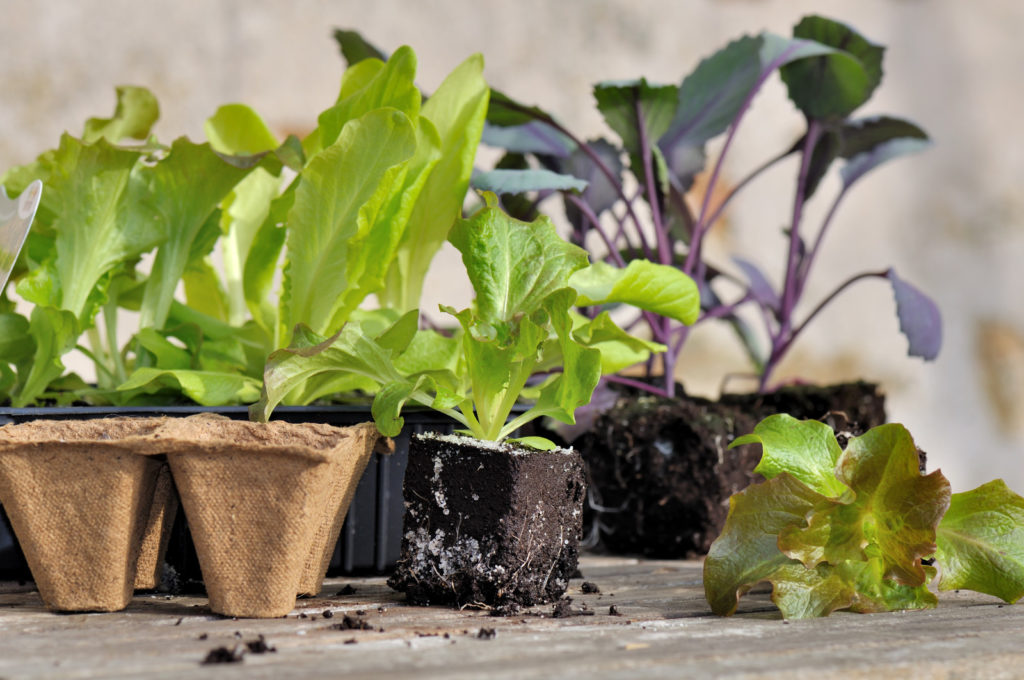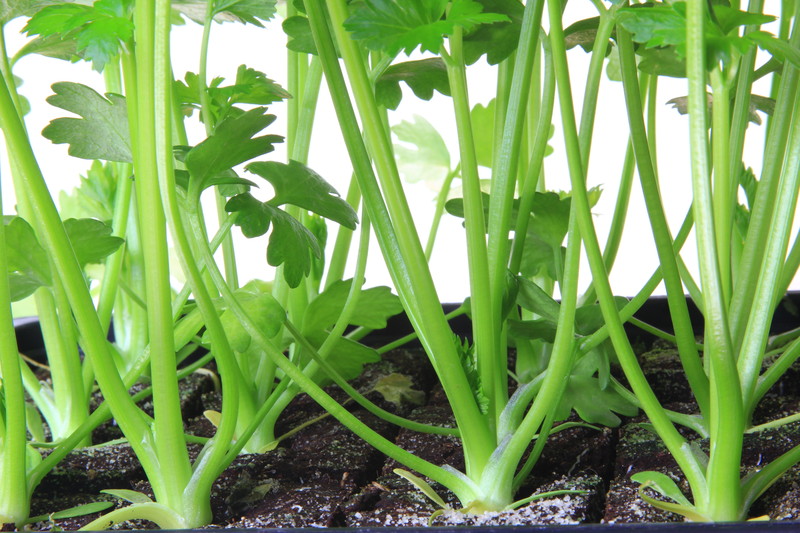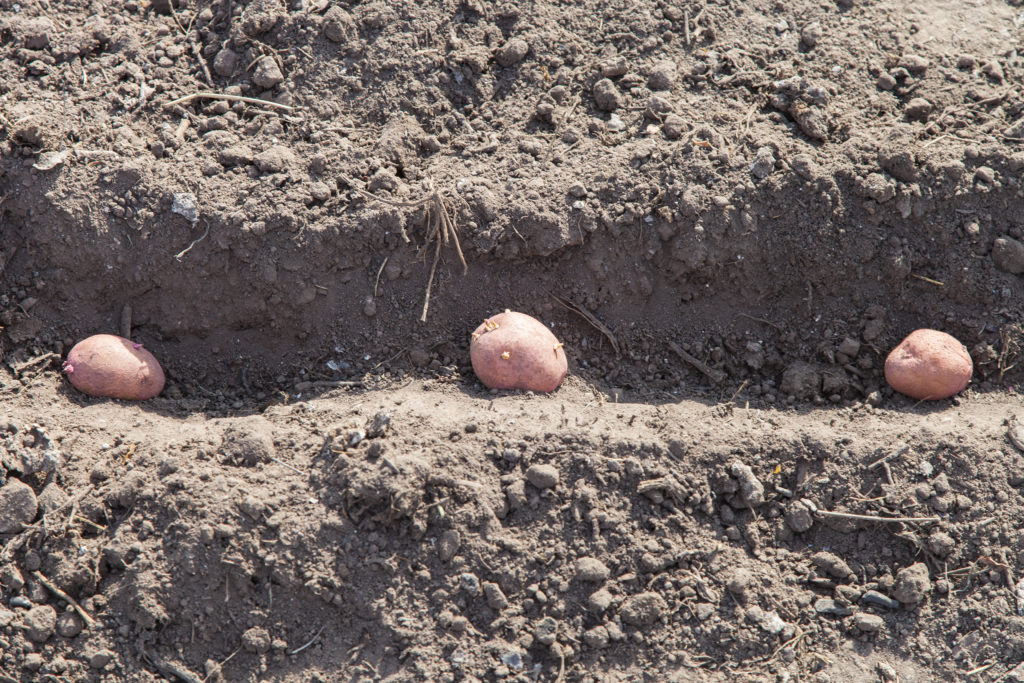Starting Vegetable Seeds Indoors and Out
There are three ways to get your vegetable garden growing:
- Sow seeds directly in the garden.
- Start seeds indoors and transplant them to the garden when the weather warms.
- Transplant seedlings purchased at the garden center into the garden.
Starting seed indoors will give you the following:
- Earlier harvests allow you to stretch the growing season.
- Wider choice of cultivars than available for sale at garden centers.
- Protection from early pests, soilborne diseases, and unpredictable weather
- Savings: seeds are cheaper than store-bought transplants.
- The satisfaction that you have grown your very own plants.

Good Products for Seed Starting Success at Amazon:
- Jump Start Germination Station w/Heat Mat Tray, 72-Cell Pack, Dome
- Espoma Seed Starting Mix
- 200 Count- Jiffy 7 Peat Soil Seed Starting Plugs
- Seed Starter Kit with Humidity Dome (120 Cells Total Tray)
- AgrobriteT5 Fluorescent, 2-Foot, Grow Light System
Crops best started from seed in the garden
Some crops are not easily transplanted into the garden. These crops simply want to be handled as little as possible; they are too small or too delicate as seedlings to be moved from one place to another. And when it comes to thinning, it’s best to simply cut the thinnings of these crops off at soil level rather than lift them from the bed. Start these crops from seed in the garden:
- Beets
- Carrots
- Corn salad
- Garden cress
- Parsnips
- Rutabaga
- Salsify
- Turnips

Crops best started from seed indoors
Some crops do poorly in outdoor germination conditions–the soil or air temperature must be optimal for success. Started indoors these crops gain the strength necessary to do well in the garden.
Cool-weather members of this group need a head start indoors because they must reach maturity when the weather is cool, before spring turns warm. But the cold air and soil temperatures of late winter are too cold for them to begin growing. Start these crops indoors and set them in the garden to come to maturity before it gets hot.
- Broccoli
- Brussels sprouts
- Cabbage
- Cardoon
- Cauliflower
- Celeriac
- Celery
- Florence fennel
- Kale
Warm-weather members of this group generally take 100 or more days to reach harvest. Started from seed in the garden when the weather is finally warm enough (temperatures consistently in the 60s or above) they are likely to run out of growing season or hold space in the garden that could be used by quicker-maturing cool-weather crops earlier in the season. They are best transplanted into the garden when the soil and air temperatures are right. Started indoors these plants will be well developed when they go to the garden; you won’t have to thin these plants. These crops include:
- Cucumbers
- Eggplant
- Melons
- Peppers
- Squash
- Tomatoes
Good Products for Raised Bed Growing at Amazon:
- Galvanized Raised Bed 8×3
- Cedar Raised Bed 4×8
- Elevated Cedar Planter 4×2
- Walk-In Greenhouse Tunnel 15x7x7
- Row Cover for Freeze Protection 10×30

Crops to start indoors or outdoors
Some crops start outdoors just as well as they will start indoors. They are not finicky. Cold climate gardeners–gardeners with short growing seasons–often add these crops to those started indoors. The indoor start allows these crops to go into the garden as soon as the soil is workable (with the exception of corn–which will prefer to wait until outdoor temperatures are consistently in the 60s or above).
- Chinese cabbage
- Chard
- Collards
- Sweet corn
- Endive
- Escarole
- Kale
- Kohlrabi
- Leeks
- Lettuce
- Mustard

Crops to direct sow in the garden or biodegradable pots
Several warm-weather crops do not like being transplanted–their roots are too sensitive. These crops are best started directly from seed in the garden or in individual containers such as biodegradable peat pots or newspaper pots that can be set in the garden.
If you start these crops in plastic pots avoid bending or squeezing the root mass when you transplant them to the garden.
If you sow these crops directly in the garden, thin extra seedlings by cutting them off even at the soil level rather than lifting them and disturbing the roots of the seedlings nearby.
- Beans
- Cucumbers
- Muskmelons
- Okra
- Peas
- Pumpkins
- Squash
- Watermelon

Crops easily started indoors
First-time seed starters should start with seeds that are easy to germinate and seedlings that can withstand transplanting. If you want to gain experience starting vegetables indoors and avoid first-timers’ frustration, start with any of these crops:
- Asparagus (dormant)
- Basil
- Broccoli
- Brussels sprouts
- Cabbage
- Chinese cabbage
- Cauliflower
- Celeriac
- Celery
- Chives
- Collards
- Eggplant
- Endive
- Escarole
- Garlic
- Kale
- Kohlrabi
- Leeks
- Lettuce
- Mustard
- Okra
- Onions
- Parsley
- Peppers
- Radicchio
- Rhubarb( dormant)
- Shallots
- Sunchokes (dormant)
- Tomatoes
- Tomatillos

Crops not grown from seed
Not all vegetables are started from seed. Root divisions, cuttings, and cloves are used to get some vegetables started. Most of these crops are best started directly in the garden, but many can also be started indoors and transplanted out: artichokes: start from root divisions.
- Asparagus: start from 1-year-old roots.
- Garlic: start with cloves.
- Horseradish: start from root cuttings.
- Onions: start from sets, seeds, or small plants.
- Potatoes: start with “seed potatoes”–pieces of potato.
- Rhubarb: set out root crowns.
- Shallots: start with cloves.
- Sweet potatoes: start from slips transplants
Garden Planning Books at Amazon:
- Vegetable Garden Grower’s Guide
- Tomato Grower’s Answer Book
- Vegetable Garden Almanac & Planner
- Kitchen Garden Grower’s Guide Vegetable Encyclopedia
The post Starting Vegetable Seeds Indoors and Out appeared first on Harvest to Table.
This content was originally published here.